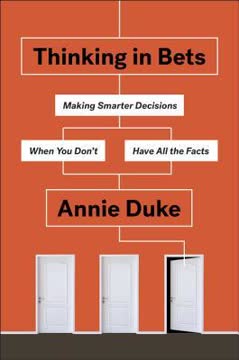Key Takeaways
1. Gamification: Harnessing Game Mechanics to Engage Users
The process of game-thinking and game mechanics to engage users and solve problems.
Defining gamification. Gamification is the application of game design elements and principles to non-game contexts. It leverages our innate love for games to make mundane tasks more engaging and motivating. By incorporating elements like points, badges, leaderboards, and challenges, gamification can transform user experiences across various domains, including education, fitness, productivity, and customer loyalty programs.
Key benefits:
- Increased user engagement and retention
- Enhanced motivation and behavior change
- Improved learning and skill development
- Greater customer loyalty and brand affinity
- Data-driven insights into user behavior
Gamification taps into fundamental human desires for achievement, status, and social connection. When implemented effectively, it can create a virtuous cycle of engagement, where users are continually motivated to participate, improve, and share their experiences with others.
2. Understanding Player Motivation: The Key to Effective Gamification
No matter what that tangible prize is, you need to disclose its value (or be sure the value is inherently known to your most loyal customers). As a result, players tend to value the interaction accurately.
Player types. Understanding different player motivations is crucial for designing effective gamified systems. Richard Bartle's player typology identifies four main types: Achievers (driven by accomplishment), Explorers (motivated by discovery), Socializers (seeking interaction), and Killers (competitive and dominant). While individuals may exhibit traits from multiple types, recognizing these core motivations helps tailor experiences to diverse user preferences.
Intrinsic vs. extrinsic motivation:
- Intrinsic: Internal drive (e.g., enjoyment, personal growth)
- Extrinsic: External rewards (e.g., points, badges, prizes)
Balancing intrinsic and extrinsic motivators is key. While external rewards can jumpstart engagement, fostering intrinsic motivation leads to more sustainable, long-term participation. Designers should aim to create systems that align with users' internal drives while providing meaningful external recognition and rewards.
3. Core Game Mechanics: Points, Levels, Leaderboards, and Badges
Points are important regardless of whether their accumulation is shared among players, or even between the designer and the player.
Building blocks of gamification. These fundamental elements form the backbone of most gamified systems:
- Points: Quantify progress and provide immediate feedback
- Levels: Structure progression and create a sense of achievement
- Leaderboards: Foster competition and social comparison
- Badges: Recognize specific accomplishments and milestones
Each mechanic serves distinct psychological purposes. Points provide constant feedback and a sense of progress. Levels offer clear goals and a structured path to mastery. Leaderboards tap into our competitive nature and desire for social status. Badges satisfy our urge to collect and display achievements.
When designing these elements, consider:
- Transparency: Ensure users understand how to earn points and progress
- Balance: Create achievable goals that still provide a sense of challenge
- Meaning: Tie rewards to actions that genuinely benefit the user or system
- Variety: Offer diverse ways to earn recognition and progress
4. Onboarding and Social Engagement: Crafting Compelling User Journeys
The player should not be given master level challenges as a novice. Different challenges for different levels are appropriate and fundamentally more successful.
First impressions matter. A well-designed onboarding process is critical for user retention and long-term engagement. Key principles include:
- Gradual complexity: Introduce features and mechanics progressively
- Early wins: Provide quick, achievable successes to build confidence
- Clear guidance: Offer intuitive tutorials and contextual help
- Personalization: Tailor the experience based on user preferences or goals
Social engagement loops create virtuous cycles of participation:
- Motivating emotion (e.g., desire to connect)
- Social call to action (e.g., invite friends)
- Player re-engagement (e.g., notifications)
- Visible progress/reward (e.g., unlocking new features)
By leveraging social dynamics, gamified systems can tap into our innate desire for connection and status within a community. This not only increases engagement but also promotes organic growth through user-driven viral loops.
5. Customization and Rewards: Personalizing the Gamified Experience
While we can spread gamified "icing" on your product or service with relative ease, unless the underlying cake is also delicious, most users won't want to take a second bite.
The power of personalization. Allowing users to customize their experience increases investment and ownership. This can include:
- Avatar creation and customization
- Choosing personal goals or challenges
- Selecting preferred reward types
- Customizing interface elements or themes
However, be wary of the "tyranny of choice." Too many options can overwhelm users. Offer meaningful customization without decision paralysis.
Reward strategies:
- Virtual goods: Digital items with perceived value (e.g., avatar accessories)
- Access: Exclusive content or features
- Power: Increased abilities or influence within the system
- Real-world perks: Tangible benefits tied to in-app achievements
Effective reward systems balance immediate gratification with long-term goals. Use a mix of predictable and surprise rewards to maintain interest. Always ensure rewards are meaningful within the context of your application and aligned with user motivations.
6. Balancing Challenge and Achievement: The Art of Level Design
In game design, level difficulty is not linear. In other words, it does not take 100 points to get to level one, 200 for level two, 300 for level three, and so on. Instead, difficulty increases in a curvilinear form.
Progressive challenge. Well-designed level systems provide a sense of continuous progression while maintaining an optimal level of challenge. Key considerations:
- Learning curve: Start easy and gradually increase complexity
- Skill-based progression: Match challenges to user abilities
- Meaningful milestones: Create clear, achievable goals at regular intervals
- Variable difficulty: Include both "easy wins" and stretch goals
Flow state. Aim to keep users in the psychological state of "flow," where challenge and skill are balanced:
- Too easy → boredom
- Too difficult → anxiety
- Just right → flow (engaged, focused, enjoyable)
Regularly analyze user data to fine-tune difficulty curves and ensure most players can progress steadily without hitting frustrating roadblocks or losing interest due to lack of challenge.
7. Analytics and Iteration: Continuously Improving Gamified Systems
Agile design looks for the minimum viable product before launch—what the designer and target consumer need now—knowing they can change it later.
Data-driven design. Implementing robust analytics is crucial for understanding user behavior and optimizing your gamified system. Key metrics to track:
- Engagement: Daily/monthly active users, session length, retention rates
- Progression: Level distribution, completion rates for challenges/quests
- Social: Invitation rates, viral coefficients, social sharing frequency
- Monetization: Conversion rates, average revenue per user (if applicable)
Iterative improvement:
- Launch with core features (minimum viable product)
- Gather data on user behavior and pain points
- Analyze trends and identify areas for improvement
- Implement changes and new features
- Repeat the process continuously
Be prepared to adapt your system based on real-world usage. What sounds good in theory may not resonate with actual users. Embrace an agile mindset, continuously gathering feedback and making data-informed improvements to your gamified experience.
8. Real-World Applications: Case Studies in Successful Gamification
Nike Plus subtly draws the player into the game and makes her want to come back again and again—thereby advancing her goal of becoming a better runner.
Learning from success. Examining real-world examples provides valuable insights into effective gamification strategies:
-
Nike+: Gamified fitness tracking
-
Social challenges and celebrity encouragement
-
Visual progress mapping and achievement celebration
-
Integration with real-world goals (e.g., marathon training)
-
Duolingo: Language learning app
-
Skill trees for structured progression
-
Daily streaks and time-limited challenges
-
Immediate feedback and bite-sized lessons
-
Stack Overflow: Q&A platform for developers
-
Reputation points and badges for quality contributions
-
Privileges tied to reputation levels
-
Gamified moderation and community management
Key takeaways from successful implementations:
- Align game mechanics with core user motivations and product goals
- Create meaningful progression systems that keep users engaged long-term
- Leverage social dynamics to increase retention and viral growth
- Use gamification to reinforce desired behaviors and skills development
- Continuously iterate based on user feedback and data analysis
By studying these examples and adapting their strategies to your specific context, you can create more engaging and effective gamified experiences for your users.
Last updated:
FAQ
What's "Gamification by Design" about?
- Overview: "Gamification by Design" by Gabe Zichermann explores how game mechanics can be implemented in web and mobile applications to enhance user engagement and solve business problems.
- Core Concept: The book introduces the concept of gamification, which involves using game-thinking and game mechanics to engage users and solve problems.
- Practical Guide: It serves as a practical guide for marketers, product designers, and strategists to understand and apply gamification in their projects.
- Case Studies and Examples: The book includes case studies and examples to illustrate successful gamification strategies in various industries.
Why should I read "Gamification by Design"?
- Understanding Gamification: It provides a comprehensive understanding of gamification and its potential to transform user engagement and business strategies.
- Practical Application: The book offers practical advice and techniques for implementing gamification in real-world scenarios.
- Expert Insights: Written by a leading expert in the field, it includes insights and lessons from successful gamification projects.
- Broad Audience: It is suitable for marketers, product designers, developers, and anyone interested in leveraging game mechanics for business success.
What are the key takeaways of "Gamification by Design"?
- Game Mechanics: Understanding and applying game mechanics like points, badges, levels, and leaderboards can significantly enhance user engagement.
- Player Motivation: Identifying and leveraging player motivations, such as mastery, social interaction, and achievement, is crucial for successful gamification.
- Design Principles: The book emphasizes the importance of designing for engagement, using frameworks like MDA (Mechanics, Dynamics, Aesthetics).
- Case Studies: Real-world examples demonstrate how gamification can be effectively implemented across different industries and applications.
How does "Gamification by Design" define gamification?
- Definition: Gamification is defined as the process of using game-thinking and game mechanics to engage users and solve problems.
- Flexible Framework: This framework is powerful and flexible, applicable to any problem that can be addressed by influencing human motivation and behavior.
- Broader Context: It unites concepts like serious games, advergaming, and games-for-change into a cohesive worldview informed by behavioral psychology.
- Practical Application: The book provides a practical approach to applying this definition in business and product design.
What are the foundational concepts in "Gamification by Design"?
- Fun Quotient: The book emphasizes that everything has the potential to be fun, and fun should be a primary goal in design.
- Player Motivation: Understanding powerful human motivators, such as mastery and social interaction, is key to designing engaging experiences.
- Game Mechanics: Core mechanics like points, badges, levels, and leaderboards are essential tools for creating engaging systems.
- SAPS Model: The SAPS (Status, Access, Power, Stuff) model is introduced as a system of rewards, with status being the most desired.
How does "Gamification by Design" address player motivation?
- Intrinsic vs. Extrinsic: The book discusses the balance between intrinsic and extrinsic motivation, emphasizing the importance of aligning them.
- Player Types: It categorizes players into types like achievers, socializers, explorers, and killers, each with different motivations.
- Progression to Mastery: The book outlines a progression from novice to visionary, highlighting the importance of designing for different mastery levels.
- Motivational Techniques: Techniques like feedback, reinforcement, and social engagement loops are explored to enhance motivation.
What are the key game mechanics discussed in "Gamification by Design"?
- Points and Levels: Points are used to track and reward player actions, while levels indicate progress and status.
- Badges and Leaderboards: Badges serve as visual rewards for achievements, and leaderboards provide social comparison and competition.
- Challenges and Quests: These provide direction and goals for players, enhancing engagement and motivation.
- Customization and Feedback: Customization allows players to personalize their experience, and feedback provides real-time progress updates.
How does "Gamification by Design" suggest implementing gamification?
- MDA Framework: The book recommends using the MDA (Mechanics, Dynamics, Aesthetics) framework to design engaging experiences.
- Onboarding: It emphasizes the importance of a smooth onboarding process to introduce players to the system and encourage initial engagement.
- Iterative Design: The book advocates for an agile, iterative approach to design, allowing for continuous improvement and tuning.
- Case Studies: Real-world examples, like Nike Plus and Foursquare, illustrate successful implementation strategies.
What are some case studies highlighted in "Gamification by Design"?
- Nike Plus: This case study shows how gamification can make fitness fun by using social support, feedback, and challenges to motivate runners.
- Foursquare: The book discusses how Foursquare successfully used badges and leaderboards to solve the "empty bar problem" and engage users.
- Health Month: This example demonstrates how gamification can motivate people to improve their health through a structured, social game.
- Quora vs. Yahoo! Answers: The book compares these platforms to highlight different approaches to gamifying questions and answers.
What are the potential pitfalls of gamification according to "Gamification by Design"?
- Overjustification: Replacing intrinsic motivation with extrinsic rewards can sometimes undermine long-term engagement.
- Badgenfreude: An overabundance of meaningless badges can lead to disengagement and devalue the reward system.
- Gaming the System: Players may attempt to exploit the system, so it's important to design with safeguards and iterate based on player behavior.
- Misalignment: Poorly aligned game mechanics and player motivations can result in ineffective or counterproductive outcomes.
How does "Gamification by Design" address the legal and ethical considerations of gamification?
- Legal Issues: The book highlights the importance of understanding legal and regulatory issues, especially concerning virtual currencies and rewards.
- Terms of Service: It advises creating clear terms of service and applying them consistently to protect the integrity of the system.
- Policing the System: The book suggests employing admin or sysop positions to monitor and control player behavior and transactions.
- Ethical Design: Designers are encouraged to consider the ethical implications of their gamification strategies and prioritize player well-being.
What are the best quotes from "Gamification by Design" and what do they mean?
- "Fun Is Job #1": This quote emphasizes the importance of making experiences enjoyable, as fun is a key driver of engagement and motivation.
- "The House Always Wins": This highlights the need for well-designed systems where the designer maintains control and ensures the system's success.
- "Be the Sherpa": This metaphor encourages designers to guide players on their journey to mastery, providing support and structure along the way.
- "Gamification is about to change everything": This statement reflects the transformative potential of gamification in various industries and applications.
Review Summary
Gamification by Design received mixed reviews. Readers appreciated its practical approach and introduction to gamification concepts, but many found it outdated and lacking depth. Some praised its examples and checklists, while others criticized its commercial focus and shallow treatment of game mechanics. The book was generally seen as a good starting point for beginners, but experienced readers found little new information. Several reviewers noted the book's self-promotional aspects and outdated references as drawbacks. Overall, it was considered a basic overview of gamification techniques with limited long-term value.
Similar Books









Download PDF
Download EPUB
.epub digital book format is ideal for reading ebooks on phones, tablets, and e-readers.




